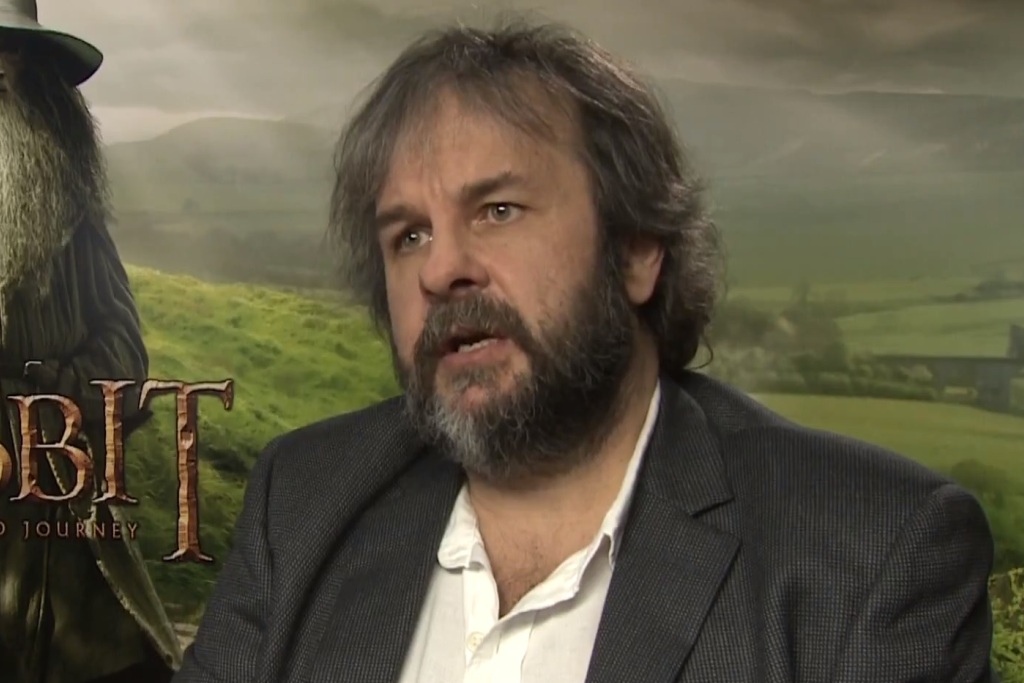Behind-The-Scenes Of Peter Jackson’s Insane New Blockbuster ‘Mortal Engines’
“This isn’t as unmakeable as Lord Of The Rings,” Peter Jackson promises us.

This year, Peter Jackson will unveil his latest creation: Mortal Engines, a $100-million blockbuster based on the novel of the same name. Junkee’s MARIA LEWIS visited the film’s New Zealand set, where Jackson, director Christian Rivers and the team behind The Lord Of The Rings are trying to make the unmakeable.
—
We’re standing in the middle of London’s iconic St Paul’s Cathedral and next week this whole thing is getting pulled down. The intricate ceilings that arch towards the sky will be stripped, the pillars extending hundreds of feet into the air recycled and anything that can’t be reused sent off to the Wellington tip. That is the nature of a beast like Mortal Engines, the $100-million adaptation of the best-selling 2001 novel of the same name.
Written by Philip Reeve, the book captured a horrifying world of steampunk dystopia where a once great metropolis like London is now a mobile “traction city”, wandering a desolate wasteland devouring towns smaller, slower and more unfortunate. The book captured the imagination of readers with dramatic airship battles, political plots and rebels seeking to overthrow a dictatorship (hello, modern relevance).
With the debut of the first trailer, global audiences got their first glimpse at a world quite unlike anything else seen on screen before. “If we can get a magic triangle that’s like Star Wars, Harry Potter and Mad Max,” says director Christian Rivers, “We can land in the middle somewhere.”
Making The Unmakeable
If there has been a thread running through Sir Peter Jackson’s career, it’s his tendency to flip the bird at people when they say he can’t do something.
Everyone said the Lord Of The Rings was unmakeable, so he made it. The Lovely Bones could never work as a movie given it was about the sexual assault and murder of a child — so he made it work. And now, Mortal Engines, a world so vast and expansive and unique many filmmakers, producers and execs simply thought it impossible to bring to life.
Enter stage right: Jackson in bare feet, a disheveled mop of hair, cradling his signature cup of tea and confidently saying “this isn’t as unmakeable as Lord Of The Rings”. So notorious is Jackson’s refusal to wear shoes — for instance, it’s 7’C in Wellington and he just negotiated the distance from his trailer to this room across the Stone Street Studios lot without a single flinch — that he has been temporarily banned from sound stage seven where majority of that week’s shooting is taking place until he agrees to wear, at the very least, sandals. “It’s a safety hazard,” mumbles one of the production staffers, casting his exposed toes a sideways glance.
“Whenever I start reading anymore I do unfortunately start to see a movie playing in my head. Then you pick up the phone and say ‘are the rights available for that?’” — Peter Jackson
The reality is, when you’re a Sir you can do whatever the fuck you want. In a post-Lord Of The Rings world and following the five years of his life “that were put on hold” for The Hobbit, Jackson is enjoying a cruiser existence that includes “developing other peoples projects” and reading books on history and physics for enjoyment (“anything by Neil deGrasse Tyson”).
“Whenever I start reading anymore I do unfortunately start to see a movie playing in my head,” says Jackson. “Then you pick up the phone and say ‘are the rights available for that?’”
That’s pretty much how it happened back in the early noughts when the filmmaker and his writing-producing partners Philippa Boyens and Fran Walsh acquired the rights to the Mortal Engines series. They had read — and loved — the first book in Philip Reeve’s story, quickly devouring the others soon after. “It’s a comment on consumerism,” he notes. “The book is written in a fairly cinematic fashion, which made our job easy for us, and Philip Reeve’s style gets more embedded along the way.”
Jackson began working on the project in earnest in 2008, getting his team to design some of the most compelling elements of the production including mechanical man Shrike and the intimidating traction city of London. Jackson, Boyens and Walsh got a script together but soon had to put it on the backburner when it became clear they would have to focus all their energies on The Hobbit.
When the dust had settled on Middle Earth once again, Jackson was “panicked” to learn the option was about to expire on Mortal Engines so he set out making it a reality with his longtime collaborator Christian Rivers stepping in to the director’s chair to make his feature debut.

Hester Shaw Is Your New Favourite Furiosa
Crouched in front of a monitor, earphones pressed to ears, we’re watching the citizens of a smaller city get processed in the gut of greater London. Some 140 extras (who all started at 3.45am that morning) trudge past the cameras covered in a fine, salty crust.
A young woman steps forth, brown hair matted and hanging around her face — half of which is concealed by a scarf. She blends in with the crowd, so much so that no one notices as she slips a dagger under her sleeve. Although you can’t see most of her face — two thirds of it are covered with a scarlet scarf — you almost don’t need to. Her eyes pierce the viewer, even right through the small screens where we’re viewing the dailies from a nearby tent. They burn into you with intent and drive. This is Hester Shaw.
“I think in general we find it very hard to watch women being difficult,” says Hera Hilmar, the up-and-comer tasked with bringing Hester to life. “Jesus, I mean the amount of characters you read that are described as ‘beautiful’ or ‘intelligent’ … they’re not allowed to be faulty or messy. To be able to play someone who is more real than any of those other (stereotypical) Hollywood female roles that very often are written for women, that’s what I liked about her.”
The companions between the Mortal Engines world and Mad Max are just: it’s a grim dystopia ravaged by climate change where the only things that survive are those with a purpose. If that’s the case, then Hester Shaw undoubtedly emerges as the film’s Furiosa.
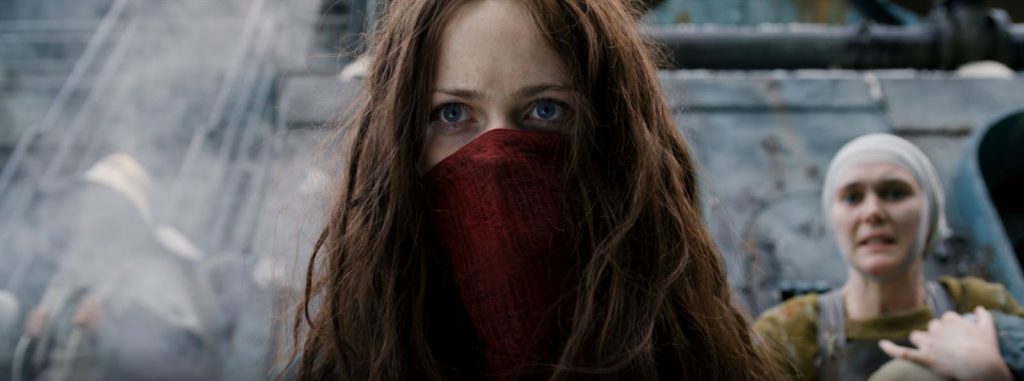
Played by Icelandic actress Hera Hilmar, she comes from the world of critically acclaimed indies and art-house films where she’s used to “negotiating my own deals”. This is her first blockbuster and if what we’ve seen so far is any indication, girlfriend is about to snatch every scene from under her co-stars noses.
“I’ve felt that even in my work, if I put my foot down, I’ve found that if a woman sometimes says something she can be called difficult,” says Hilmar. “That would never be said about a guy — he’s just someone who knows what he wants. I think Hester has the full right to be pissed off and upset and difficult.”
Looking like a grim version of Mortal Kombat’s Mileena, concealed beneath Hester’s scarf is a grisly scar that crosses from one side of her face to the other: a mark of what she has endured and, more significantly, what she has survived. “I wanted it to be bigger, more full on,” adds Hilmar, who worked closely with the make-up effects team and the filmmakers before settling on the final look. “That’s kind of the whole point, you look at her and you go ‘shit what happened?’”
An assassin with agency, she has a prickly personality developed after years of needing a defence mechanism. The name Hera Hilmar leaps to the front of co-writer and executive producer Sir Peter Jackson’s mind when asked about one of the sole takeaways people will have from Mortal Engines. “Hester and her story will be very much who the audience goes with,” he says. “I’ve always been drawn to movies with strong female characters, going way back to Heidi The Hippo and Meet The Feebles.”
And in this? Well, in the words of director Christian Rivers: “The cool female characters outweigh the male characters in a big way.”
“We’re Gonna Need A Bigger Boat”
Wellington’s Stone Street Studios isn’t just famous in New Zealand, it’s famous around the world for the large-scale blockbusters brought to life behind its closely monitored gates (The Hobbit films, King Kong and Ghost In The Shell are just a few). In fact, it’s the reason Wellington City Council made an ill-fated attempt to get huge, white letters that spelled ‘Wellywood’ plastered over the side of a hill overlooking the bay.
Now Stone Street is home to a crew of close to 600 who are working 24 hours a day in nippy 7’C to 10’C Aotearoa weather to turn fiction into a film. There are more than 70 major set pieces that make up the Mortal Engines world, most of them in constant construction across all of the studio’s sound stages and even in their storage areas. It takes weeks to get one up — the recreation of St Paul’s Cathedral took seven in total — and the second the scenes are shot, the set is pulled down and rebuilt into something else precisely where the previous one stood.
The production doesn’t have the time — or the space — to waste. “It’s not as glamorous as it sounds, being eaten by London,” says Ra Vincent, as we tiptoe through a completed set that is being stripped for parts. Wooden doors, window frames, cement pavement and concrete tiles are being sorted by a team of people as crews work out what they can and what they can’t use again on the fly.
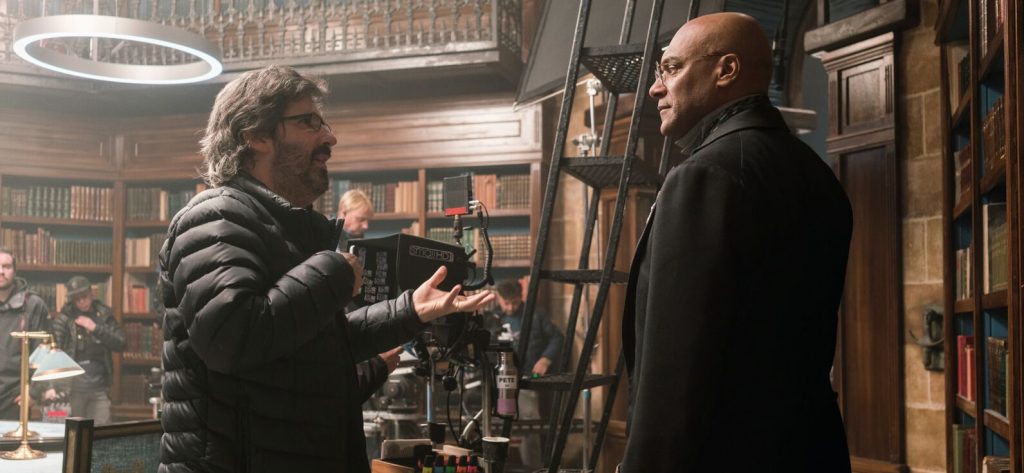
Vincent, whose family are also all working on the Mortal Engines in the make-up and art departments respectively, was last on Thor: Ragnarok with Taika Waititi and has now swapped space for salvaging. “In a world of moviemaking that relies on visual effects, it’s nice to be working with large sets that are manmade,” he says. “It might feel like a waste of money to build this big, but it pays dividends in the end. If you were to come back next week, this would all be different.”
The physical sets are something to behold, with the Natural History Museum of London even being brought to life with ‘relics’ from the past that includes mobile phones, toasters and even, er, Minions. “It’s faithful to the scale of it,” notes Vincent, with an All Blacks flag just visible across the other side of the set. A significant part of this world can be categorised as ‘things that can fly’ with the look, design and practicality of Mortal Engines coming down to Vincent’s father-in-law, famed concept artist Dan Hennah.
“They’re fighting ships, so mobility was key,” says the Oscar-winner, showing us designs for the Jenny Haniver, the airship of Mortal Engines’ signature bad-ass Anna Fang. “It’s very much driven by the ethnicity and personality of the person driving them.” This explains why the interior of an airship belonging to “faulty resurrected man” Shrike resembles a combination of Buffalo Bill’s lair and a rusty H.R Giger workshop: the threshold for the amount of creepy doll heads used has been reached then exceeded.
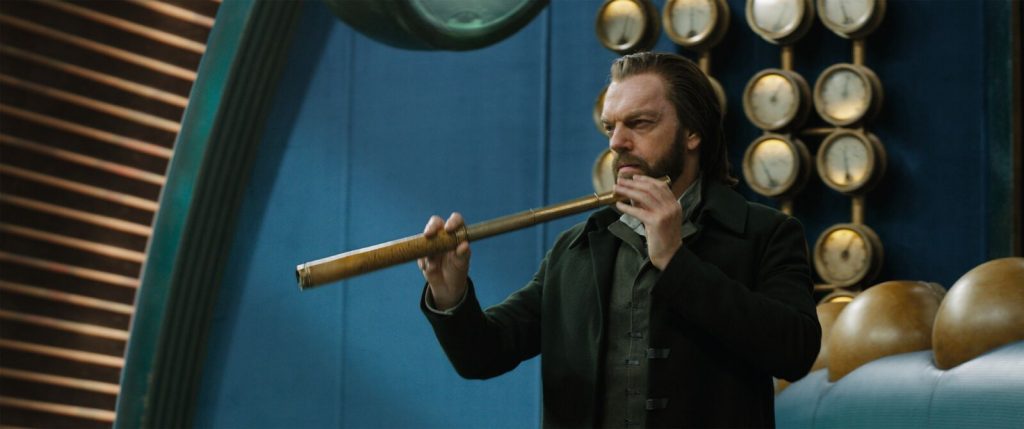
The Mad Max: Fury Road production designers had this idea that nothing appearing in the films would be there without reason — everything would have a purpose — and that concept could very well have been extrapolated from the original Mortal Engines novel in 2001. It’s a salvaged society, with remnants of the old world mashed together with elements of the new. “You move or you die in this world,” says Hugo Weaving, who takes on one of the leading roles.
Part of the process for Hennah and his team of artists, model makers and so on has been trying to “find a balance between the crazy dystopian worlds of the traction cities and the multicultural Shan Guo”. Philip Reeve, his wife and 15-year-old son were here just last week — their first ever movie set visit — and one can only wonder what he thought of seeing the fictional world he created IRL. Mortal Engines is called a ‘manufacturing movie’, with costumes for around 1500 extras crafted from scratch: from the handmade buttons stitched into tailored coats to chainmail being painfully hand sewn by a woman in the workshop whose sole job it is.
In the props department belt buckles are being aged, weapons are being manufactured (namely a dagger-gun hybrid with a built-in knuckle duster) and a pair of Brogues are being customised. “These are handmade, limited edition,” chirps one of the prop masters, holding up the shoes. “And we’re gonna stick shit on them.”
Bad Boys Do It Well
Have you heard of Slang? Heck, he has been in over 50 films during a career that has spanned four decades, including the highest grossing movie ever made: Avatar. You must have heard of Slang, sorry, Stephen Lang.
“He’s even on the call sheet as Slang,” Hera Hilmar smirks. “He introduced himself as Slang, his grey suit has Slang on the front … “ The formidable American actor Stephen ‘Slang’ Lang is helping bring one of Mortal Engine’s toughest — and scariest — characters to life. His performance as the blind yet menacing villain in Don’t Breathe drew director Christian Rivers attention, seeing potential for a real-life portrayal to inform what had up until that point been only a digitally rendered character.
Jackson calls him “this psychopathic cyborg robot guy”, Shrike, a complex antihero with a mission. Slang brought an intimidating presence to set wearing a voice modulator over his grey motion-capture suit to help create the part-man, mostly part-machine — the gent Rivers dubs the “faulty resurrected man”. Slang studied insects and watched hours of Praying Mantis videos to mimic the movements, with Mortal Engines writers busily tweaking and updating scenes based on his performance
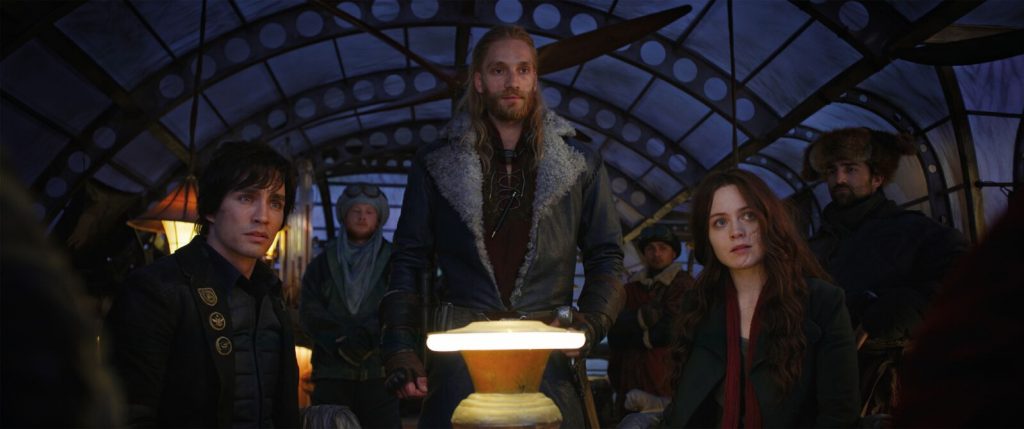
The design of Shrike is one of the film’s most striking pieces of imagery, with concept artists under the leadership of Hennah first starting work on the character almost a decade ago. There were books of designs, before they narrowed it down to 15 main ones and then five final contenders.
“The important thing for us is he’s the resurrected man,” says Hennah. “The brain is real, the eyes are real, and that’s it. The rest is mechanical.”
Shrike dances the line between man and machine, much the same way he does as a good guy and bad guy. There’s not a whole lot of black and white in the Mortal Engines world, just a lot of grey. Cloaking himself in those shades is Hugo Weaving, playing the maybe-good guy, maybe-bad guy Valentine.
“Individuals are not important to him,” notes Weaving, who says returning to Stone Street Studios – where he shot the Lord Of The Rings and Hobbit films – felt like coming home. “Even if it’s thousands of people who had to die for something to change, he’d do it. It’s a very cruel way of thinking.”
He’s a man not without motivation. One of the big appeals for Jackson in casting his frequent collaborator Weaving was the complexity he would bring to the part of Valentine. “We didn’t want a guy who would be an obvious villain or play him as an obvious villain,” he says. “We wanted someone who could be a complex person.”
Remember The Name: Anna Friggen Fang
In the words of Jackson, there are “a lot of fabulous female characters”. It was true of the Mortal Engines book and it’s something even more prevalent in the movie adaptation, with secondary supporting characters moved out of the way to make more room for the women.
Although Hester Shaw is at the centre, this girls-to-the-front attitude carries through to one of the story’s MVPs: Anna Fang. A rebel, a pilot, a political saboteur and leader of the Anti Traction League, think of her as Korra meets O-Ren Ishii. Fang — who’s likely to save the day and steal your girl without even breaking a sweat — is played by singer and artist Jihae. And she’s not the only woman to watch out for, with Rivers saying “we have female heroes, some great female villains, female supporting characters”.
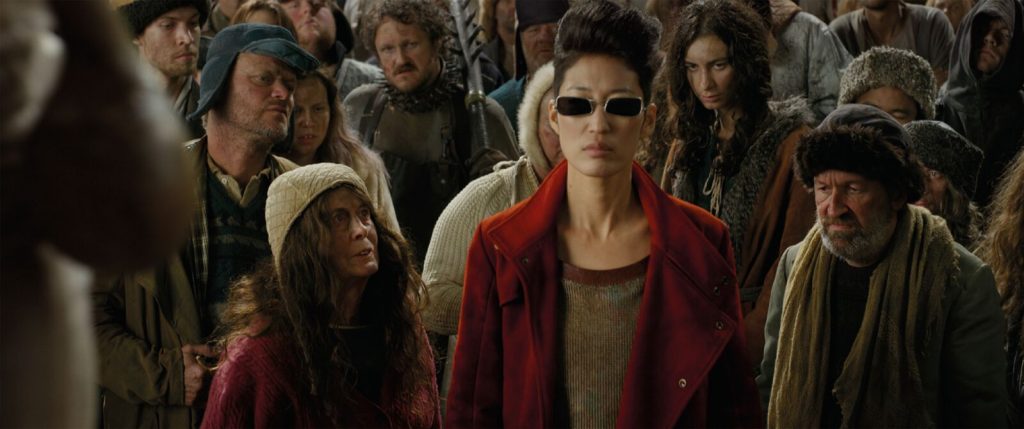
Samoan up-and-comer Frankie Adams — who is legit built like a comic book superhero IRL — plays one of the rebel saboteurs under Anna Fang’s command. Add to that Australian-American actress Leila George as the intelligent and politically minded Katherine — London city’s somewhat first daughter — women are the fuel keeping Mortal Engines on its tracks.
Behind-the-scenes Phillipa Boyens and Fran Walsh serve as the co-writers and producers hopefully taking this beloved property from the page to one of 2018’s biggest hits like they did with Lord Of The Rings, The Hobbit and King Kong. They were one of the “countless reasons” George signed on to the project — that and the fact she’s a massive fan of the book.
“Who doesn’t want to work with this team?” she asks, still smiling despite the fact she had an early start after a grueling 15 hour first day on set just 24 hours previous. “I’m 100 percent honoured to be part of this. Fran and Phillipa are meticulous, they’re very particular in certain they’re looking for and they’re not going to move on until they’re happy.
“It’s terribly exciting.”
—
Mortal Engines opens in cinemas on Boxing Day 2018.
—
Maria Lewis travelled to the Mortal Engines set at the expense of the film studio.
